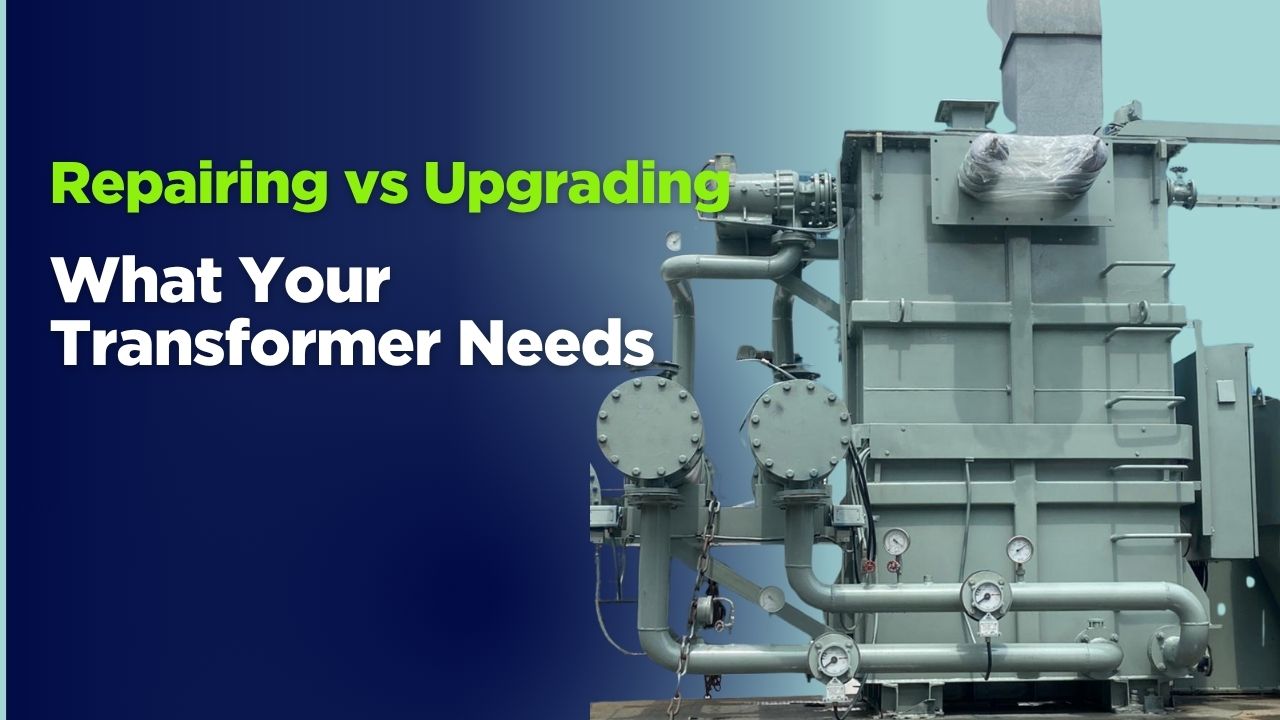

Every transformer hits a limit. Sometimes it’s thermal, sometimes mechanical.
Either way, something starts to drift—oil analysis changes, loads spike, or losses creep higher than they used to. And now you’re stuck with a decision that rarely feels obvious. Repairing sounds easier.
Upgrading sounds expensive. But what the transformer needs might not line up with either assumption.
Let’s walk through five ways to get clearer about what’s really going on and what action will keep your system steady.
Testing records hold more clues than people tend to notice. Not just results from the latest inspection, but how they’ve changed over time.
For example, if gas levels in the oil have climbed month after month, that’s not just aging. That’s stress building inside.
The same goes for temperature logs. A slight heat rise at low load might feel harmless until you realize it’s now a weekly occurrence.
When trends layer on top of each other—voltage swings, insulation fatigue, audible vibration—you’re looking at a system asking for more than a patch.
Initial quotes lean you toward repair. And sometimes that makes sense.
But if your transformer’s efficiency has dipped, or you’re calling your service crew more often than usual, the math changes fast.
Downtime carries a price even when it’s short.
An upgrade doesn't only reset the equipment.
It often recalibrates the whole system around how your current load behaves. Especially if your original transformer was spec’d before that last expansion, or before new harmonics started taxing the coils harder than they were built for.
To avoid getting stuck in either-or thinking, ask your team:
Answering these won’t pick the path for you. But they’ll filter out what’s urgent from what’s just loud.
You don’t always need a full upgrade.
Sometimes it’s enough to rewind just the affected limbs or replace the tap changers. Other times, optimizing the cooling setup reduces heat buildup that was eroding the insulation margin.
We’ve seen winding upgrades that added load capacity without changing the tank. Or redesigning airflow to lower operating temperature.
These are upgrades, sure—but with the footprint of a repair and the benefits of both.
Whether you upgrade or repair, what you build around that decision is just as important. That means better testing, easier maintenance access, and room to grow.
A repair job that leaves you guessing after install won’t hold up. An upgrade that forgets site layout will frustrate the team using it.
That’s something we factor into how we support transformer overhauls at Makpower.
Some transformers need a second life. Some need a reset. Either way, the goal stays the same—reliability that fits where your system is going, not where it came from.
Fixing a transformer might seem like the easier option. Upgrading can feel more involved. But thinking in those terms often oversimplifies the decision.
What matters more is how the transformer has been performing and what that tells you about what’s coming next.
Some issues call for quick action. Others signal deeper shifts that repairs alone may not solve.
At Makpower, we take a wider view. We factor in test data, site conditions, operational goals, and expected load behavior. Whether it leads to a rebuild or a replacement, the decision comes from understanding how your system works—not just the transformer sitting in it.